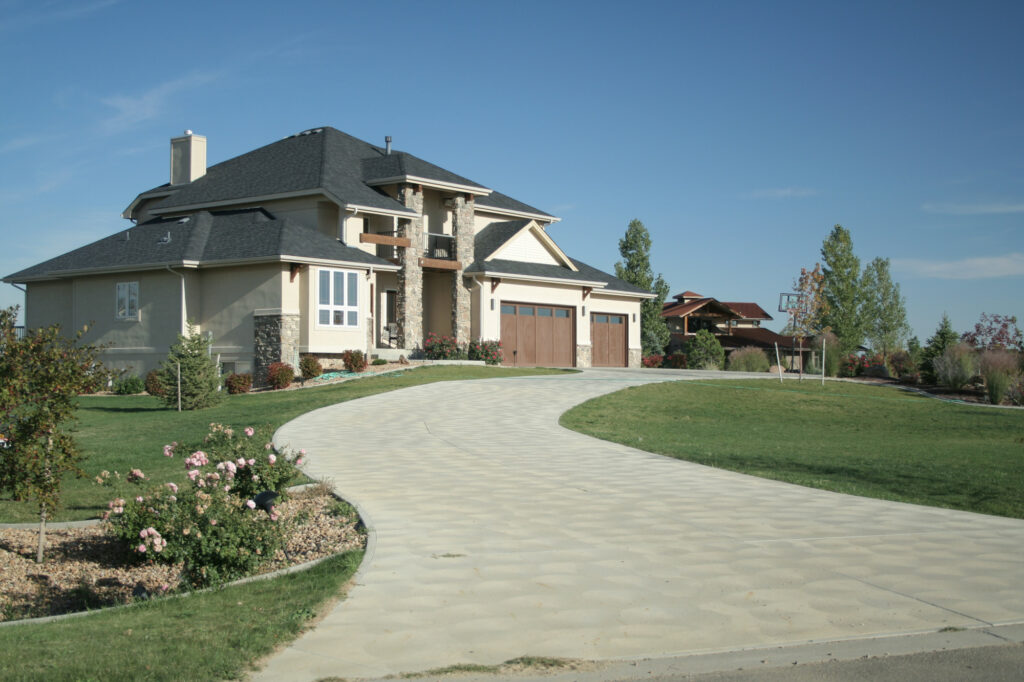
“Are those cracks in my driveway a problem? Should I repair it, replace it, or just leave it alone? And how long do driveways last, anyway?”
If you don’t know the answers to these questions, there’s a chance that your driveway’s in very bad shape. So, what do you do?
We’re guessing you don’t know the answer to that either, but that’s okay because we do.
Below is a complete guide on how to tell if you need driveway repair/replacement services. Specifically, it lists several signs to watch out for and the services needed to correct them. If you’re experiencing any of these issues, contact Designs4You right away to get them fixed.
Methods of Driveway Repair
There are two options for repairing a driveway: patching and resurfacing. Small cracks and potholes can be patched. That means filling them up with a concrete sealant or asphalt.
This method is very inexpensive. However, these patches leave visible marks on your driveway’s surface.
A less conspicuous option is to resurface your driveway. This is where you remove the top layer of your driveway and lay fresh concrete in its place.
This is a lot more expensive than patching and a lot less expensive than a full replacement, and it makes your driveway look brand new.
How to Tell if You Need Driveway Repairs
Most of the time, the damage or wear you see on your driveway is very minimal. Namely, it’s contained solely within the surface layer. As long as this damage doesn’t affect the base layer, the damage can be repaired.
Generally, if the damage covers less than 50% of your driveway, the base layer should be fine. But you must repair the damage quickly or it will spread. Now, here are some common problems that can be repaired.
1. Fading/Stains
You can remove most driveway stains yourself using various DIY methods. If you’re unable to remove stains, at least know that they’re harmless to your property.
Aside from stains, though, your concrete may fade or become discolored as it ages. This, too, is harmless.
But, if you don’t like the look of these problems, you can resurface your driveway. Alternatively, you may be able to cover it up with a decorative concrete sealer.
2. Small, Isolated Cracks
Concrete inevitably forms cracks over time. So, concrete workers safeguard against this flaw with control joints. That is, they create concrete slabs with intentional weak points to control the formation of cracks.
Thus, the cracks you see in your driveway typically aren’t a problem. Cracks that measure less than 1/4 of an inch wide should be patched so that they don’t spread. There’s no need to repair short, hairline cracks.
3. Divots/Potholes
Potholes should be patched up as well. Otherwise, they’ll get worse with time and weather, and they’ll start crumbling away.
4. Minor Crumbling of Edges
A little crumbling at the edges of your driveway may happen naturally. Or it could be corrosion caused by de-icing salts or too much moisture.
Regardless, if it happens only once in a while, it’s a minor issue. Just patch it up before it gets worse.
5. Sunken/Raised Areas
Your driveway should be level with your garage floor. If the driveway’s higher or lower at a certain point, don’t try to repair it right away.
Instead, try to find out why this is happening. (For this, it’s best that you consult with the construction experts at Designs 4 You.)
For example, a raised area usually happens when the ground beneath the slab is swollen with water. You may have a drainage or plumbing problem to fix before you address your driveway.
Likewise, if an area is sunken, find out if there’s a sinkhole beneath. If there is no apparent cause, you can patch the sunken area to make it level.
6. Other Signs of Wear
Other signs of wear are bound to happen, like scratches from tire chains. But, as long as your driveway is less than 10 years old, most damage should be repairable.
How to Tell if You Need Driveway Replacement
A full driveway replacement is rarely necessary since most problems can be fixed with repairs or resurfacing. But, once the damage penetrates the base layer, the repair is impossible.
At that point, the driveway is unstable and your repair attempts can no longer hold it together. Then, replacement is your only option. Here are a few examples of such situations.
1. Long, Deep, Wide Cracks
None of the cracks you see should extend from one end of the driveway to the other. If they do, it means that the slab is completely split all the way through. There’s no possibility of bonding the severed pieces back together again.
Another sign is that plants are sprouting through the crack. In these instances, the damage is so deep that it’s reached the base layer.
Likewise, cracks that are over 2 inches wide will have reached the base layer. Such a driveway must be replaced.
2. Many Cracks or Potholes
“Spiderweb cracks” are interconnected and make the surface of your driveway look like scales. If this or any other damage covers over half of your driveway, the driveway needs replacing.
3. Widespread Crumbling of Edges
If there’s widespread crumbling and it spreads very quickly, your concrete is too weak. It will continue falling apart until you replace it.
4. Very Old Driveway
Your driveway could last as long as 20 years. But if it’s close to or past this point, and has several of the problems on this list, you should replace it. Schedule a consultation with Designs 4 You to know for sure.
Contact Designs4You For Driveway Repair or Replacement
If you noticed any of these problems, don’t wait to get the help you need. Contact Designs 4 You, the top remodeling and construction experts in San Diego County.
Go here to get a free estimate for driveway repair or any of our other services. Or, call us at (858) 939-9998.





